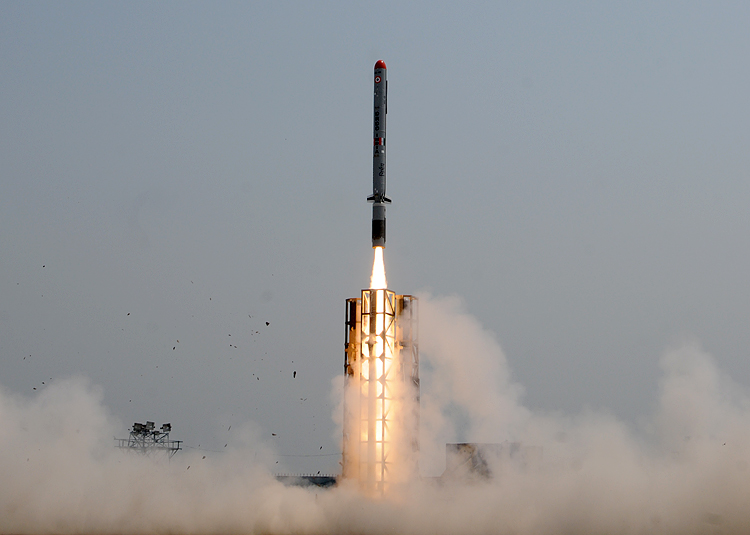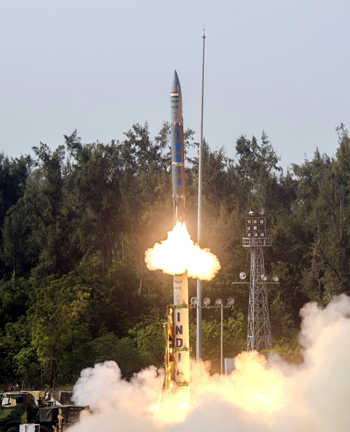INDIAN ARMED FORCES CHIEFS ON
OUR RELENTLESS AND FOCUSED PUBLISHING EFFORTS

SP Guide Publications puts forth a well compiled articulation of issues, pursuits and accomplishments of the Indian Army, over the years

I am confident that SP Guide Publications would continue to inform, inspire and influence.

My compliments to SP Guide Publications for informative and credible reportage on contemporary aerospace issues over the past six decades.
Military Inducting Nirbhay, Pralay Missiles
India strengthens defence arsenal as Nirbhay and Pralay missiles join Armed Forces in a strategic upgrade
 |
The Author is Former Director General of Information Systems and A Special Forces Veteran, Indian Army |

Media reports of November 15, 2023 have said that the Indian Armed Forces will be inducting the long-range attack cruise missile ‘Nirbhay’ into their inventory, and also the ‘Pralay’ missiles will be produced on a large scale and are expected to join service in the near future. The Nirbhay missile has a strike range of over 1,000 km. According to defence sources quoted in the media, the government has approved Nirbhay missile for two defence services recently and one service (Army?) has sent up a proposal for inducting the Nirbhay missiles in significant numbers.
Nirbhay is a long range, all weather, subsonic cruise missile indigenously designed by the Aeronautical Development Establishment (ADE) under the Defence Research and Development Organisation (DRDO). The missile can be launched from multiple platforms and is capable of carrying conventional and nuclear warheads. Being a subsonic cruise missile, Nirbhay has a speed of Mach 0.7 compared to the BrahMos supersonic cruise missile which flies at Mach 2.8 to Mach 3.0. Nirbhay can also form a deadly combination with the BrahMos missiles. A limited number of the Nirbhay missile are reportedly deployed along the Line of Actual Control (LAC) with the ongoing standoff with China.
The Indian Armed Forces will be inducting the long-range attack cruise missile ‘Nirbhay’ into their inventory

The surface version of Nirbhay missile was test fired for the first time on March 12, 2013 from the Integrated Test Range (ITR) at Chandipur in Balasore district of Odisha. The missile in its maiden flight was supposed to hit a static target situated 1,500 km away in the Bay of Bengal. The test was a partial success as the missile took off, reached the second stage of propulsion, and traveled 30 per cent of its range before deviating from its path. The second test was conducted on October 17, 2014, in which the missile travelled more than 1,500 km meeting all parameters. This was followed by the third test in October 2015, fourth test in December 2016, fifth test in November 2017, sixth test in April 2019 and seventh test in June 2021.
The next set of trials of Nirbhay missile, according to the requirement of the Indian Armed Forces, were conducted under the name Indigenous Technology Cruise Missile (ITCM); to include Small Turbo Fan Engine (STFE) developed by Gas Turbine Research Establishment (GTRE) and a radio-frequency (RF) seeker from Research Centre Imarat (RCI). Concurrently, development of an air-launched variant and submarine-launched variant was being pursued. Trials of the ITCM were conducted in October 2020, August 2021, October 2022 and the final successful test fired with an upgraded RF seeker and indigenous Manik engine on February 21, 2023.
Pralay is a tactical surface-to-surface, short-range ballistic missile (SRBM) developed by the DRDO
Project ‘Pralay’ was sanctioned in March 2015 with a budget of 332.88 crore. Pralay is a tactical surface-to-surface, short-range ballistic missile (SRBM) developed by the DRDO. It is an amalgamation of technologies developed for the exoatmospheric interceptor missile Prithvi Defence Vehicle (PDV) and the Prahar tactical missile. Powered by solid fuel rocket motor, the missile follows quasi-ballistic trajectory and is capable of mid-air maneuvers using maneuverable reentry vehicle (MaRV) to defeat anti-ballistic missile (ABM) interceptors. Trials of Pralay began in December 2021, followed by trials in December 2022 covering 500 km with heavier payloads, and the final successful test on November 7, 2023 meeting all required mission objectives.
Pralay carries 350-700 kg high explosive fragmentation warhead, Penetration-Cum-Blast (PCB) and Runway Denial Penetration Submunition (RDPS) at a range of 150 km to 500 km. The missile uses the same composite propellant developed by the High Energy Materials Research Laboratory (HEMRL) for the Sagarika missile, which generates more energy compared to the propellant used in Agni missiles Pralay is designed to target radar and communication installations, command and control centres and advance airfields using conventional warhead. It is road mobile and meets the tactical requirement of the Indian Army; filling the gap of a conventionally armed ballistic missile that is not hampered by our nuclear policy.
The missiles Pralay, Nirbhay, BrahMos, and Pinaka are to be part of the Integrated Rocket Force (IRF), creating a comprehensive package of long-range and intermediate-range missiles in the Indian inventory
In the backdrop of the continuing standoff with China, the Ministry of Defence (MoD) had cleared the acquisition of 120 Pralay missiles in December last year. Two more units of 250 Pralay missiles worth 7,500 crore were in advance stages of acquisition as of April 2023. The purchase of a Pralay regiment for the Indian Army was approved by the MoD on September 17, 2023. A similar proposal was earlier cleared for the Indian Air Force (IAF). The Pralay missile is comparable with China's 'Dong Feng 12' and Russia's 'Iskander', which is being used in the ongoing war in Ukraine.
The missiles Pralay, Nirbhay, BrahMos and Pinaka are to be part of the Integrated Rocket Force (IRF), which will be a separate entity from the Strategic Forces Command (SFC). This will create a comprehensive package of long-range and intermediate range missiles in the Indian inventory. According to sources quoted in the media, the three services (Army, Navy and Air Force) may also get to choose from the existing fleet of ballistic missiles in the strategic forces for their individual use in conventional roles.





